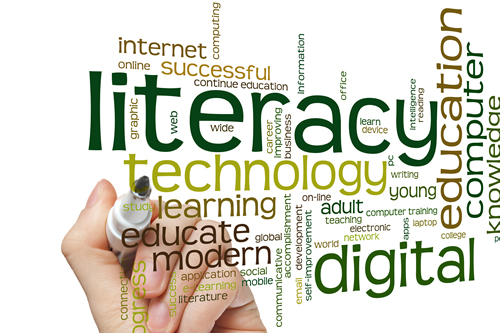“Jeff. I’ve got a big challenge. Help!”
That was a voicemail message I received from a friend, a principal at a local elementary school one sunny summer afternoon. What was the challenge? Her 30 slightly apprehensive teachers had to deliver a digital literacy curriculum to her 450+ students the next school year. Like many other educators around the country, the principal’s team understood the need for their students to learn digital-literacy skills to become responsible citizens and to be prepared for the challenges of college, and careers, but … where to start?
Before discussing building, purchasing or creating a digital literacy curriculum, we decided to devise a set of essential qualities that we felt would be helpful to evaluate potential digital-literacy curriculum options. Ultimately, with the help of other schools and districts, we decided to focus upon these eight themes:
1. Aligns with standards at the national, state, and local standards and grade levels. Most states and districts base their digital literacy standards on the International Society for Technology Educators (ISTE) standards for students and teachers.
2. Provides assessment opportunities to determine benchmark digital literacy proficiencies, measure student progress, growth and achievement on formative and, finally, summative levels.
3. Differentiates, adapts, and personalizes instruction based upon group or individual student needs—including ability to re-sequence content or provide differentiated instruction to students for remediation or acceleration.
4. Integrates with core or enrichment content to deepen core content knowledge as students simultaneously learn to use technology tools and skills.
5. Engages students with a balance of online and offline activities to deepen understanding. Ones that stimulate students and provide interactive opportunities for instruction, guided practice, and application of concepts and skills through features like graphics, audio and video, personalized learning, and gamified environments.
6. Promotes important learning in ways other formats can’t including interactive content, audio, video, auto-scored instruction and assessments, online gradebooks, and reports. Assuming the curriculum will be delivered online, it should be regularly updated based on changing skill needs as well as student and educator feedback.
7. Saves time, especially for busy educators. Student and teacher should be able to access and use the curriculum intuitively or with minimal training. If delivered online, the curriculum contains auto-scored instructional and assessment content, an online dashboard, gradebook, and reports for individual students, classes, schools. and district.
8. Provides technical and instructional support for educators that is accessible via interactive chat, phone, and email or similar help so that their questions can be addressed quickly.
Using these criteria, my friend and her team ultimately decided to purchase a digital-literacy curriculum that included opportunities for the educators to create and add their own content. By blending a pre-built, standards-aligned digital- literacy curriculum with their own core-content lessons, they helped their students build their digital-literacy skills while deepening core content knowledge at the same time!
If you are considering purchasing a digital literacy curriculum, building or modifying your own, I would recommend considering using these themes as the criteria for assessing and evaluating its potential for effectiveness. You may also wish to consult with sources like ISTE or the Computer Science Teachers Association (CSTA) as way to find additional criteria that may be helpful as you prepare your students to excel in a digital world.
[Editor’s Note: This article originally appeared on the Learning.com Newsroom.]
- 4 ways to encourage play in education - April 25, 2024
- CoSN IT Leader Spotlight: Lisa Higgins - April 25, 2024
- It’s time to pay student teachers - April 25, 2024


